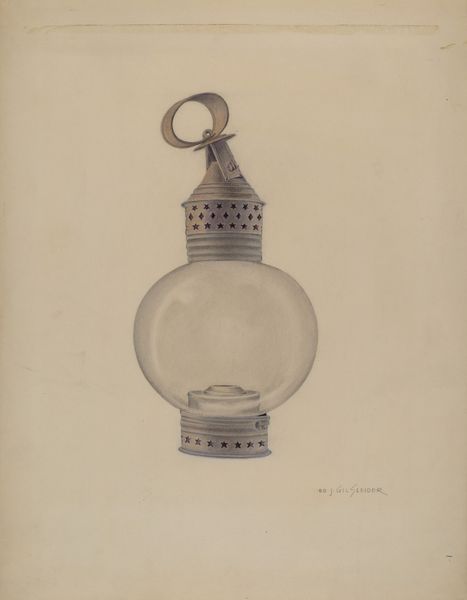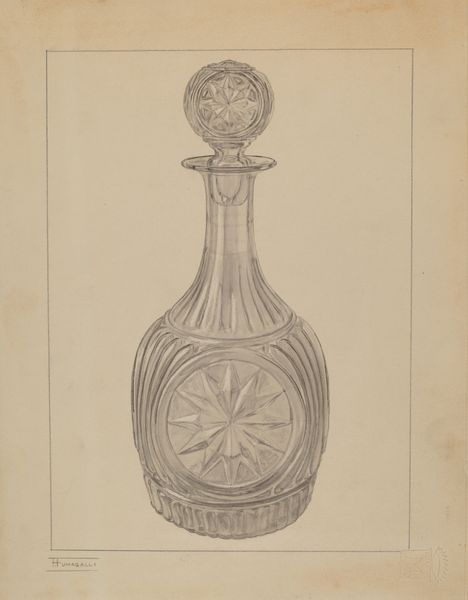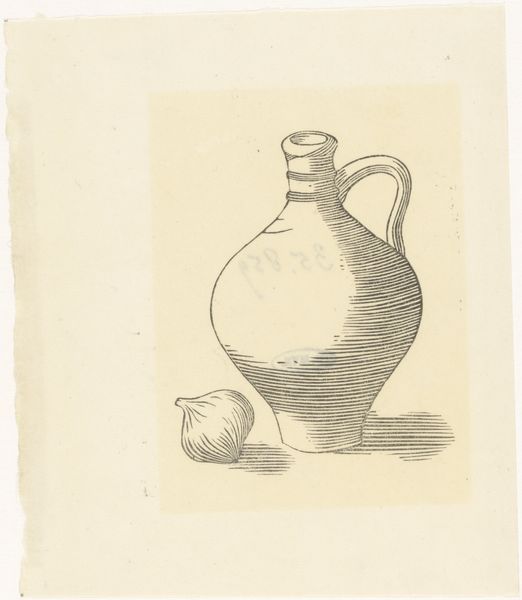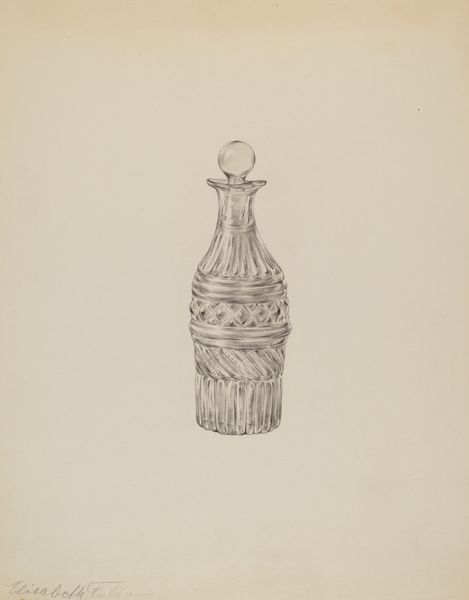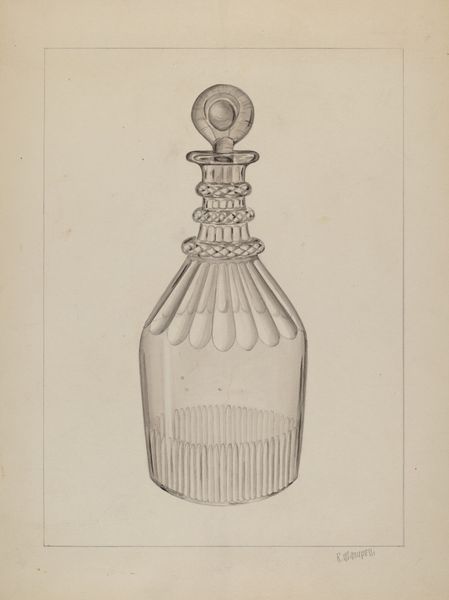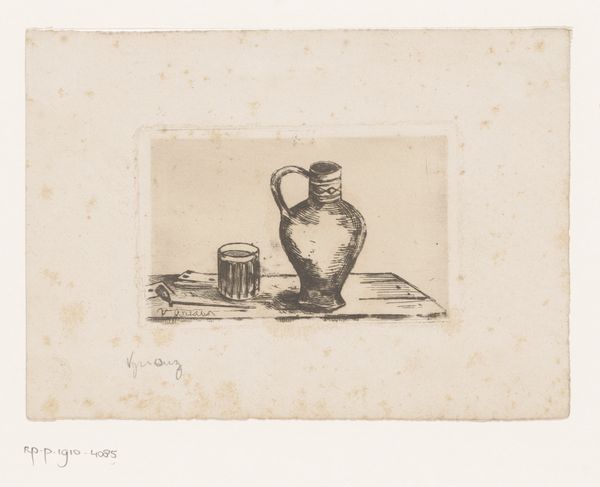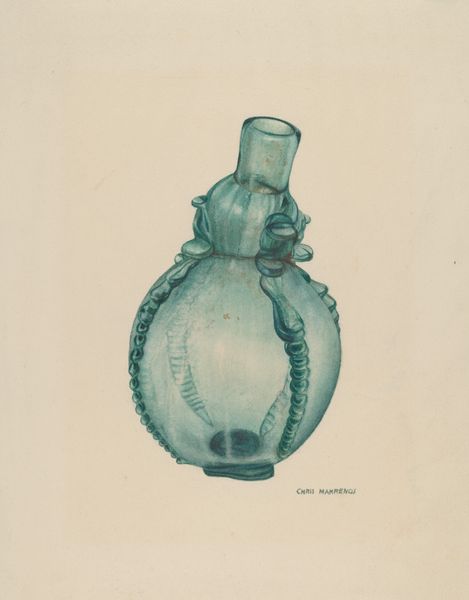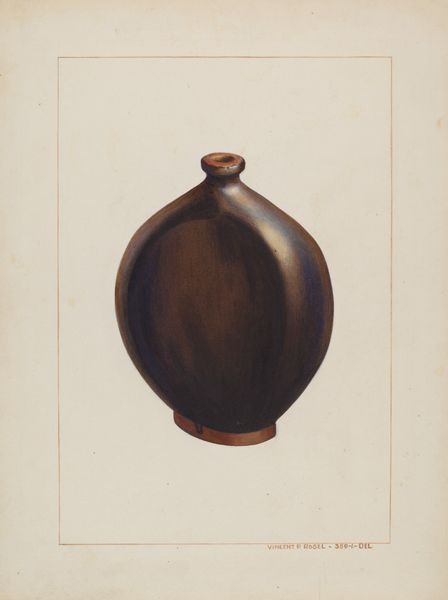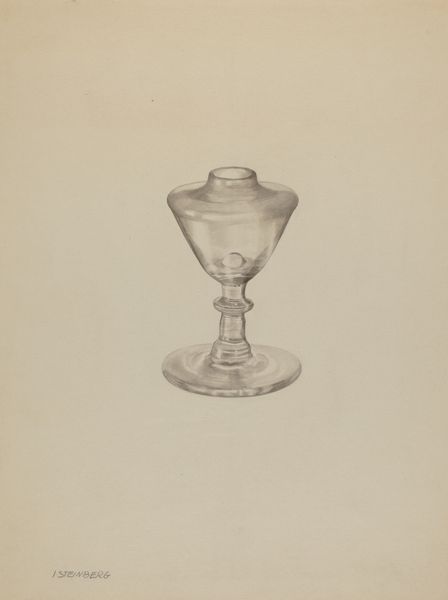
drawing, print, paper, ink, pencil
#
drawing
# print
#
vase
#
paper
#
ink
#
pencil drawing
#
geometric
#
pencil
#
decorative-art
Dimensions: height 178 mm, width 206 mm
Copyright: Rijks Museum: Open Domain
This etching of a glass vase, possibly Venetian, was crafted by Henri-Charles Guérard. Notice the central hole, a void that draws the eye, reminiscent of ancient oculus designs. The oculus, or eye, has a long history, dating back to the Pantheon in Rome, where it served as both a source of light and a symbolic connection to the heavens. In Guérard's vase, the hole disrupts our expectations of an object meant to contain. Consider how the vase's ornamentation, while delicate, frames this void. It's as if the artist is highlighting the interplay between presence and absence, fullness and emptiness. This resonates with our own psychological experiences: How we often define ourselves and the world around us by what's missing or lost. The vase is a reminder of how human memory works: it is selective, fragmented, and often defined by what we choose to leave out.
Comments
No comments
Be the first to comment and join the conversation on the ultimate creative platform.

